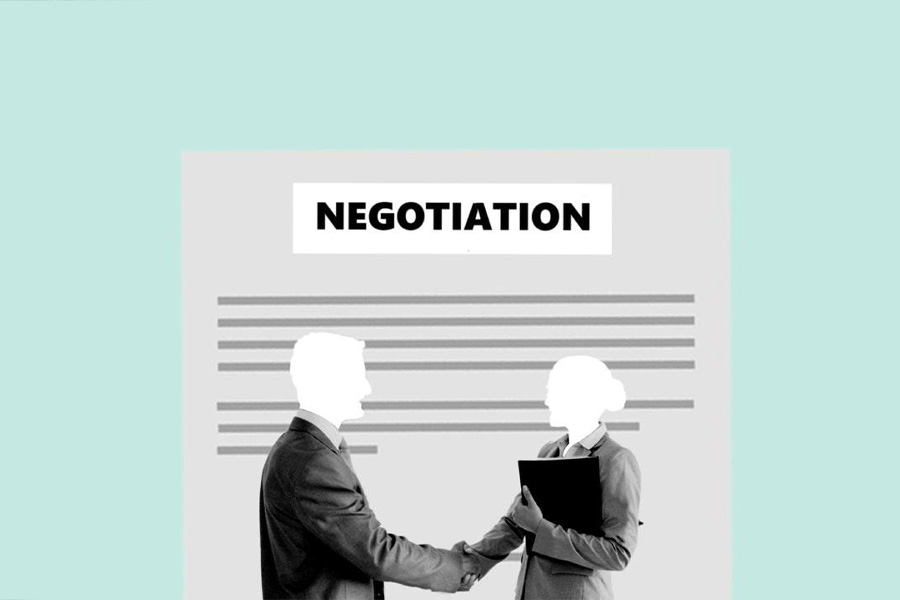In today’s economically challenging environment, businesses are under more pressure than ever before to be as efficient as possible in their supply chain management strategies. Strategic sourcing might just be the answer to improving procurement efficiency and boosting business growth.
At Wayne State University, strategic sourcing has resulted in cumulative cost savings of nearly $2.3 million for the fiscal period of 2015-2017. The strategic sourcing program saved money by reducing administrative costs, lowering procurement costs, and improving the speed at which materials are purchased.
So what is strategic sourcing? What are the benefits of strategic sourcing? And how to integrate strategic sourcing in supply chain management?
Table of Contents
What is strategic sourcing?
Advantages of strategic sourcing in supply chain management
7-step template for implementing strategic sourcing
Strategic sourcing: a key part of supply chain management
What is strategic sourcing?
While many businesses are familiar with tactical sourcing, which deals with day-to-day purchase decisions, strategic sourcing is more involved and requires a more holistic approach. It’s an organized effort to find the most efficient, cost-effective vendors and make sure they’re meeting all of the company’s needs.
Strategic sourcing is the practice of identifying and establishing long-standing relationships with suppliers that contribute to the long-term business goals and objectives, rather than just buying goods and services at the lowest price. Strategic sourcing can be used for everything from purchasing raw materials and products to outsourcing manufacturing operations.
Advantages of strategic sourcing in supply chain management
Strategic sourcing practices can lead to many benefits for business buyers, including stronger supplier relationships, reduced risk and lead times, and greater predictability of costs.
Stronger supplier relationships
One of the most important advantages of strategic sourcing is that it strengthens the relationships with the suppliers. Strategic sourcing is a collaborative process that involves both the businesses and the suppliers in the decision-making process, so they can work together to identify areas where improvements can be made. This will allow vendors to have a better understanding of what the business needs are, and they’ll know exactly how to meet them; which means they’ll be able to provide better service and more value than they would otherwise.
Greater predictability of costs
By analyzing the existing spending areas, business buyers can determine where their costs are trending so they can plan for any future price increases. Strategic sourcing allows businesses to have a firm grasp on their cost structure and understand what their cost drivers are. Once they have this knowledge, they can develop strategies that will allow them to meet their profitability goals while also ensuring that they’re not overpaying for products or services.
Reduced risk
Strategic sourcing can help minimize risk in supply chains by diversifying suppliers and product sources. By maintaining strong relationships with suppliers, businesses will be less vulnerable to disruption in service or price changes. A company that uses strategic sourcing will be able to see where they stand with each of its suppliers, which can help them identify risks before they become actual problems.
Decreased lead times
Another advantage of strategic sourcing is the reduction of lead times. Lead time is the amount of time between when an order is placed and when it’s delivered. Strategic sourcing can help businesses avoid bottlenecks and delays in their supply chains by providing a single point of contact for all vendors. By having multiple suppliers working together in sync with the business’s objectives and needs, it’s easier to ensure that everything is delivered on time and in full.
Better decision-making
Strategic sourcing helps companies better manage their operations by enabling them to better understand their suppliers’ capabilities and the entry barriers into new markets or products. With this information, businesses can make more informed decisions about where to spend money and which supplier relationships to prioritize.
7-step template for implementing strategic sourcing
This 7-step framework can assist businesses and companies, regardless of their size and complexity, in implementing strategic sourcing.
Assessment of spending areas

The first step in the strategic sourcing process is to assess the current spending. This means evaluating all of the spending areas, which can include raw materials and supplies, facilities management, transportation, logistics, or even employee benefits.
Businesses at this point want to determine which areas are most likely to benefit from strategic sourcing, as well as which areas are already being managed effectively by internal teams or third parties.
Supply market analysis

The next step for businesses is to have a thorough understanding of their supply market. A supply market is the aggregate of all suppliers that provide goods or services to a particular industry or set of buyers. This phase involves performing an in-depth analysis of the relevant suppliers to determine their market standing and capabilities. The first step in performing a supply chain market analysis is identifying the target market.
The next step is determining the suppliers’ strengths, weaknesses, opportunities for growth, and threats to their success. This means understanding how they operate their business and what they offer. A SWOT analysis can help create a more complete picture by analyzing a supplier’s internal environment and external market factors that affect its success.
Development of a sourcing strategy
The next step of the process is to develop a sourcing strategy by having a clear understanding of the business goals and objectives, as well as the limitations of current processes. What do businesses want to achieve with strategic sourcing? How can they achieve these goals in the most efficient way possible? The main focus of this stage is to determine if there are any areas where existing methods can be improved or enhanced.
For example, a garment business that sources raw textile materials from an overseas supplier might find out, after performing a SWOT analysis, that one of their leading supplier’s biggest threats is that their country will impose more taxes on exporters. This could cause a supply chain disruption or possible future price increases. To prepare for this potential threat, sourcing managers can mitigate their risk by seeking out other suppliers who aren’t at risk for these types of tax or tariff changes.
Identification of suitable suppliers
Once the business’s requirements are identified and a clear sourcing strategy is established, it’s time to find the right suppliers. A business buyer can either send out a request for information (RFI) or a request for proposal (RFP) to a variety of potential suppliers asking them to provide information on their capabilities, capacity, and costs.
Businesses can also send out a request for quotation (RFQ) to ask the suppliers to provide specific pricing information. It’s decisive to communicate the exact requirements and expectations so that the suppliers can have a clear understanding of the business’s needs.
Negotiation with suppliers

Negotiation is an important step in the strategic sourcing process. It’s a way to ensure that businesses are getting advantageous deals on their purchases, while also ensuring that the suppliers’ principles are aligned with the business’s values and mission.
This is where all of the information gathered on suppliers in step 2 comes into play. By knowing the strengths and weaknesses of suppliers, business buyers will have big leverage in their hands when negotiating partnership agreements.
Learning how to negotiate with suppliers is key for successful strategic sourcing. Businesses must be able to clearly articulate their needs, requirements, and expectations so that the supplier can match them up with their own offerings. It’s important to keep some principles in mind when negotiating with suppliers:
- Clarity is sometimes a casualty of negotiation: Before entering into a business deal, it’s important to have a clear set of goals, including what one can hope to get out of the deal and any compromises that may need to be made.
- Be a good listener: The ability to listen carefully is the most important skill a negotiator can have. Silence can be used as a way to collect thoughts and keep the conversation moving forward.
- Always have a contingency plan in place: It’s important to always have a plan B in case the negotiation falls through. Having a contingency plan can help business buyers to avoid getting caught off-guard if the supplier suddenly changes its terms.
- Remember, it takes two to tango: when negotiating with a supplier, it’s important to emphasize the pressures that its business is facing and focus on solving those pressures. This will help reach an agreement that benefits both parties.
- Opportunities are not always obvious: opportunities are often hidden in plain sight and can be found by listening to what the counterpart has to say, even if it doesn’t seem relevant at first, or by looking for gaps in their argument.
- Preparation is key to successful negotiation: negotiations are not a one-sided activity, but rather a mutually beneficial covenant that requires a high degree of preparation and research.
Implementation and integration of suppliers
After selecting the suppliers to be included in the strategic sourcing program, it’s time to integrate them into the existing supply chain. The goal is to make them part of the team; they should be treated as collaborators rather than just vendors.
Having a smart supplier management strategy will help businesses to establish clear communication protocols with their suppliers. This includes establishing a communication channel (e.g., email, phone, face-to-face meetings) and frequency (e.g., daily, weekly). It’s a good way to keep suppliers up-to-date on the most recent changes and updates so they can proactively meet businesses’ expectations.
Periodic tracking and assessment
Strategic sourcing is a continuous process that requires businesses to evaluate the performance of their suppliers and ensure that the outlined goals and objectives are always met. This can be achieved by establishing metrics and KPIs that measure performance based on quality, delivery time, price, innovation, and other strategic factors that are important to the business’s success.
Strategic sourcing: a key part of supply chain management

In conclusion, strategic sourcing is a key component of supply chain management for any business. It can help wholesalers and retailers achieve supply chain excellence by reducing their risk, strengthening supplier relationships, and improving their decision-making. For more strategies and techniques on how to improve supply chain management and logistics, Alibaba’s blog center is the place to go!




